One of the biggest issues with writing incredible resume from the internet is that most of them are subjective. What works for me might not work for you, and vice versa.
So when Austin Belcak, a career coach, released his findings from analyzing 125,484 resumes, I got excited because data, to a large extent, takes the guesswork out of the equation.
In my opinion, his findings are pure gold because they basically confirmed my suspicions that in order to write an incredible resume, there are some proven, foundational principles we should follow, whether we’re making a resume for our first job or improving upon a good resume we’ve had for years.
As usual, I care about your time, so I’m going to share the 5-key learnings upfront, then talk about the implications of the study, and end with practical resume writing tips you can use immediately to stand out. So let’s get started.
Hi, friends If you’re new here, my name is Deepak, and we’re all about practical career interviews and productivity tips.
Full disclosure, Austin did not ask me to make this Blog. He doesn’t even know who I am. The data geek in me just got so excited about all the numbers that I just had to share it in blog format. Without further ado, here are the five key learnings from Austin’s study:
Reading Lists
Write an Incredible Resume: Video
Add LinkedIn Profile
Resumes with a LinkedIn profile see higher interview rates, but only 48% of resumes included a LinkedIn profile.
A LinkedIn profile must have the following sections updated:
- Professional photo.
- Compelling summary.
- Summary of industry experience, expertise, and education.
- List of skills for endorsements.
- Strong headline.
Having a LinkedIn profile link on your resume gives you a much higher chance of landing a job interview. But if you take a closer look, having a bare-bones or basic LinkedIn profile actually decreases your chances of getting a callback.
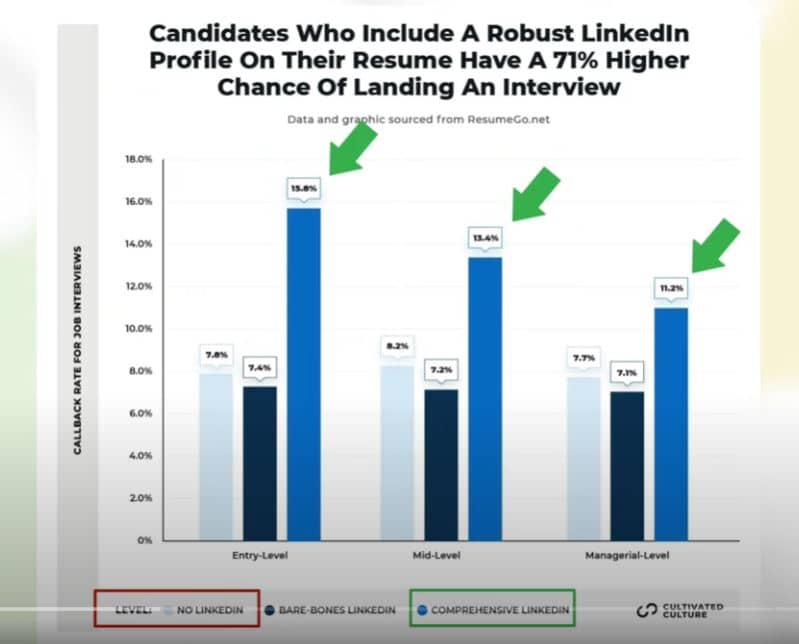

This means you’re better off hiding your LinkedIn profile if you’re not putting any effort into it. In my opinion, the differences between a comprehensive profile and a basic one boil it down to, number one, having a professional headshot and LinkedIn banner.
You may also read: 10 Best Resume Fonts For Resume Writing: Standard Size Font
Number two, how informative your work detail section is. And number three is how much effort you put into building meaningful connections. I actually have a LinkedIn Tips and Tricks playlist that walks you through all those points.
I also share how to get a custom LinkedIn URL to put on your resume so that it looks clean. Make sure to check that out after this Blog. And that’s not all, you might also notice that as job levels increased, the gap in callback rates decreased between job applicants.
This suggests that having a strong LinkedIn profile is more important for entry-level job seekers compared to their higher-level peers. If you’re finding this Blog helpful so far, please drop by, and if not, keep reading because it only gets better.
💡 Tip: It’s now always about having a Linkedin account but also a quality profile.
Include The Right Keywords
Number two, candidates only included 51% of important keywords and skills, heavily under-indexing soft skills.
Including the right keywords and skills when writing a resume or CV While I’m not a big fan of just submitting applications online, it is a fact of life that applicant tracking systems scan for certain keywords and experiences to filter out what they define as low-potential candidates.
According to the research, the average job description includes 43 keywords, but most candidates only match 51% of their resumes.
Meaning they only included 20 or so relevant keywords. In order to overcome this, you want to use free online word cloud tools.


Copy and paste the job description in there identify the keywords that pop up most frequently and make sure to include those in a natural way when writing your resume.
Read this also: Best Way to Optimize Your Resume Format
Furthermore, we see that candidates’ resumes included 60% of the necessary hard skills and only 28% of the necessary soft skills when compared to their target role’s job description.
This makes sense because there’s usually a Skills/Interests section at the bottom of your resume where you highlight your capabilities in Excel, Python, SQL, the hard skills, right?
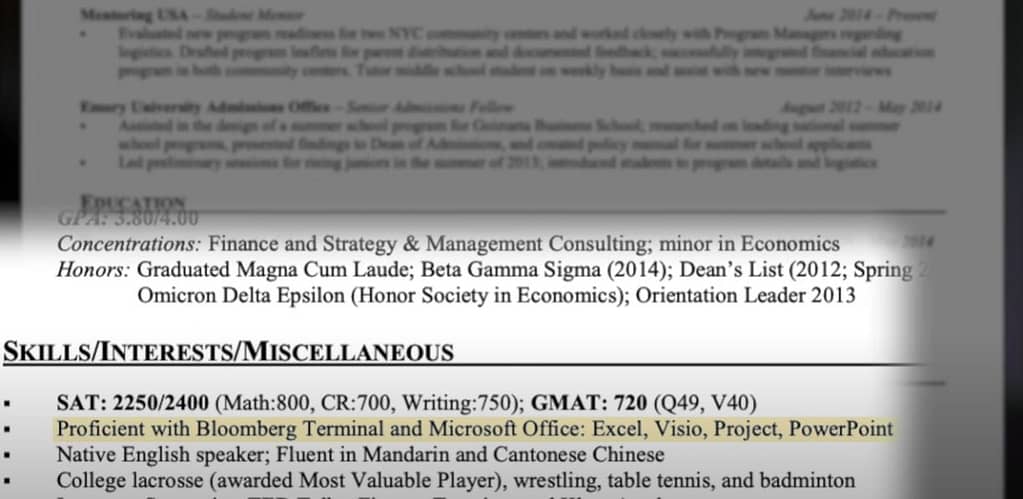

To make sure you’re also including relevant soft skills, you can take a look at Udemy’s workplace trends report or CNBC’s summary, and see which of the top 10 in-demand soft skills are applicable to you and include those as well.
Add Measurable Results
Number three, measurable metrics improve resume outcomes, but only 26% of resumes include five or more metrics.
Resume Metrics
💡 Accomplished [X] as measured by [Y], by doing [Z]
Include measurable results in your bullet points. The study shows that 26% of resumes included five or more instances of measurable metrics, while 36%—more than a third, didn’t include a single quantifiable result.
Why do companies prefer resumes with metrics? Because metrics make value easier to understand and quantify. I cannot stress this enough. If 10 candidates all say they’re responsible for planning and executing social media campaigns, it’s very hard to tell who did it well and who didn’t.
Don’t miss this blog: Resume For Internship: How To Write A Resume With Little or No Work Experience
The one person who says, “Hey, my campaigns drove a 30% year-on-year increase in sales revenue,” is going to stand out. There’s a popular X-Y-Z resume bullet point formula that goes like this.
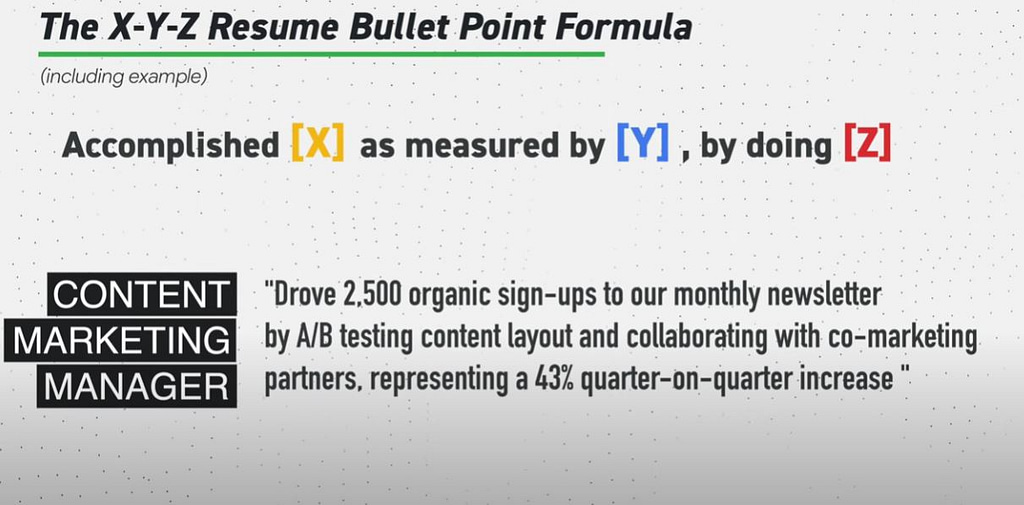

Resume Bullet Point Formula
1. Start with a Strong Action Verb: Begin each bullet point with an attractive action verb. These verbs convey action, initiative, and achievement. Consider verbs like “achieved,” “managed,” “implemented,” “led,” “developed,” or “optimized.”
Example: “Managed a team of 18 employees to enhance quarterly sales by 23%.”
2. Quantify Your Achievements: Numbers will add value to your achievements and provide context. Use specific metrics, percentages, or figures to quantify your impact.
Example: “Increased website traffic by 30% through the execution of SEO strategies.”
3. Highlight Relevant Skills: Tailor your bullet points to match the job description. Emphasize skills and experiences that are directly related to the position you’re applying for.
Example: “Used data analysis tools like SQL, Python, SAS, and Tableau to fetch insights from larger datasets.”
4. Show Results and Benefits: Explain the positive outcomes of your actions. Describe how your contributions benefited your previous employers or projects.
Example: “By streamlining supply chain processes, we were able to reduce production costs by 10%, resulting in higher profit margins.”
5. Use Keywords: Incorporate industry-specific keywords and phrases to ensure your resume gets past applicant tracking systems (ATS) and reaches human reviewers.
Example: “Implemented agile methodology to improve project delivery, meeting all deadlines and exceeding customer expectations.”
6. Keep it Concise: Aim for brevity and clarity. Avoid lengthy sentences or jargon. Use bullet points to present information in a reader-friendly format.
Example: “Led cross-functional teams to launch five successful products within budget and ahead of schedule.”
7. Tailor Each Bullet Point: Customize your bullet points for each job application. Highlight experiences and achievements that align with the specific requirements of the position.
Example: “Developed and executed a comprehensive marketing strategy that boosted brand awareness and drove a 25% increase in online sales.”
8. Showcase Career Progression: If applicable, demonstrate growth and development in your career. Show how you’ve taken on more responsibility or advanced in your roles.
Example: “Promoted twice in three years, from Junior Analyst to Senior Analyst, for consistently delivering data-driven insights.”
Pro tip: A lot of you might be working on projects that might not have a direct impact on growth or revenue. Let’s say you’re working on your company’s internal tools.
In that case, you can say your improvements led to a 33% increase in productivity for the sales team, which translates to X amount of incremental revenue.
The Right Length Of Resume
Number four, research shows that the ideal resume length is 475 to 600 words 77% of resumes fell outside of that range.
Keep your resume length between 475 and 600 words.
- This is because the research has shown that resumes in that sweet spot saw double the interviews of those that were outside of those ranges.
- 77% of the resumes from Austin’s study had either fewer than 475 words or more than 600. Meaning, that from a purely statistical standpoint, you’re automatically in a stronger position versus other candidates if you have a 500-word resume.
Of course, I do wanna point out, there are definitely exceptions when it comes to career level and academic roles.
If you’re a professor, a federal employee, or a C-level executive, you might have a two to three-page resume or CV with well over 1,500 words, and that’s perfectly fine. For those of you who do not fall in that category though, this finding means that number one, do not keyword-stuff your resume.
It’s not about the number of keywords you have in your resume, right? It’s about having the ones that match the job. And of course, number two, something a lot of us have been doing since middle school, using the word count tool in Word or Google Docs to make sure we’re staying within that sweet spot.
Remove Buzzwords And Cliches From Resume
And number five, fluffy content takes away from a resume’s value, but 51% of resumes included buzzwords, cliches, or incorrect pronouns.
The bane of all recruiters, hiring managers, and just resume readers in general, buzzwords and cliches. Do not use them. We’re all super motivated by our passions. We’re all detailed-oriented, team players. We all have creative mindsets. And who doesn’t like to talk about the synergies between different products?
If you found that hard to listen to, imagine the recruiter going over 30 resumes a day. And according to the study,51% of resumes in the data set included some sort of buzzword or cliche. Buzzwords, fluff, and cliches are unnecessary and take away from your message.
Your writing should always be selling your experience, not summarizing it. As a very practical solution, go ahead and google resume cliches and buzzwords, and remove all the ones you find in your resume to give it an instant upgrade.
Now you know the key takeaways, what does this actually mean for you? Let’s start with number one, including a LinkedIn profile on your resume. And here’s a graph that completely blew me away. At first glance, the implication seems to be pretty simple.
Conclusion
Were some of the findings from Austin’s study pretty basic? Yeah. You should always include measurable results in your bullet points, optimize and add your LinkedIn profile, and avoid using buzzwords to write a good resume. But hopefully, the numbers behind the research have convinced you that these non-negotiable aspects slay very solid groundwork for you to make additional tweaks and adjustments.
I’ve actually made quite a few of these mistakes myself back in the day, so make sure to check out my Blog on the top five resume mistakes I made when applying to management consulting and Google. See you on the next Blog. In the meantime, have a great one.
FAQs
A resume serves as a concise and tailored document that summarizes your qualifications, skills, work experience, and achievements. Its primary purpose is to showcase your suitability for a job, catch the employer’s attention, and secure an interview.
Your resume should typically include your contact information, a professional summary or objective, work experience, education, skills, and relevant certifications or achievements. Tailor these sections to match the specific job you’re applying for.
In most cases, it’s best to avoid including a photo on your resume, especially in countries like the United States and Canada, where it’s not common practice. However, there may be exceptions in some industries or countries where photos are expected.
It’s generally not necessary to include references on your resume. Instead, create a separate document with your references and provide it when requested by the employer.
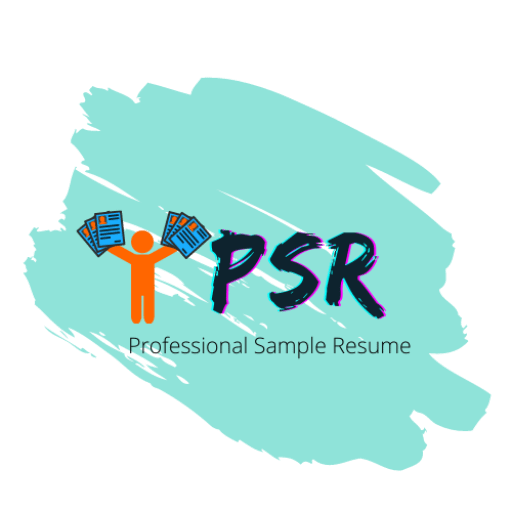
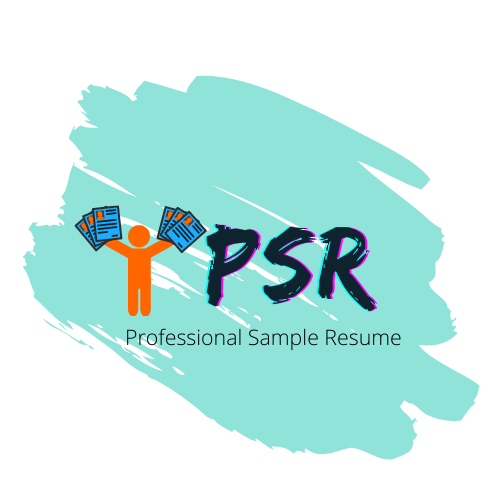





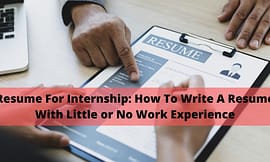

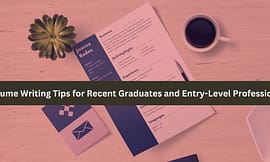

Pingback: 5 Tips To Negotiate Salary After The Job Offer
Pingback: How To Create Your Resume for Google: Tips and Advice